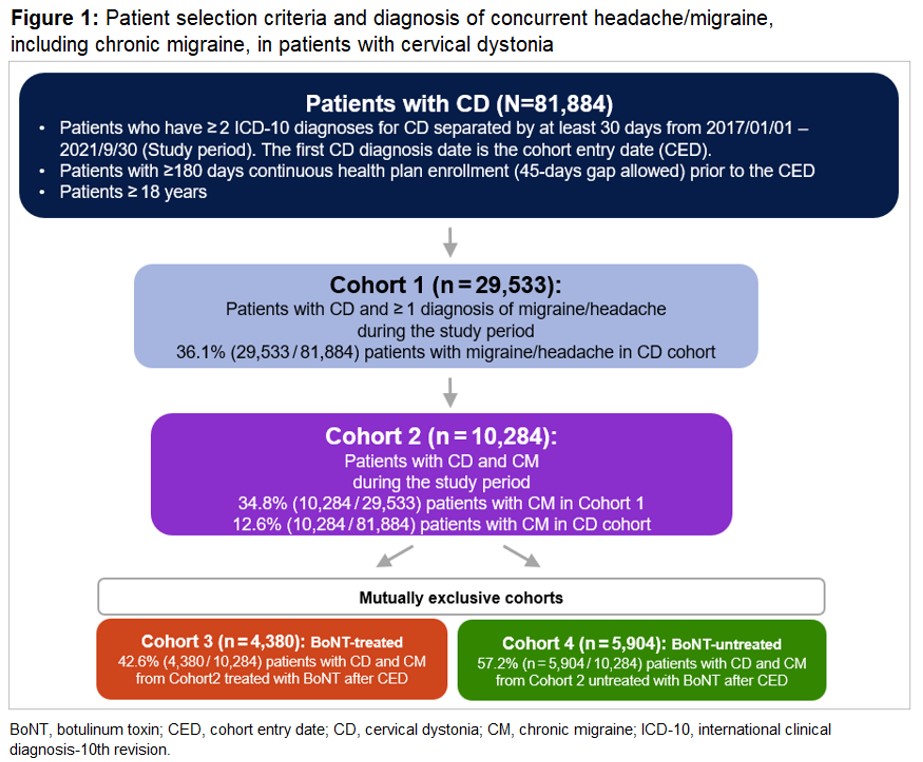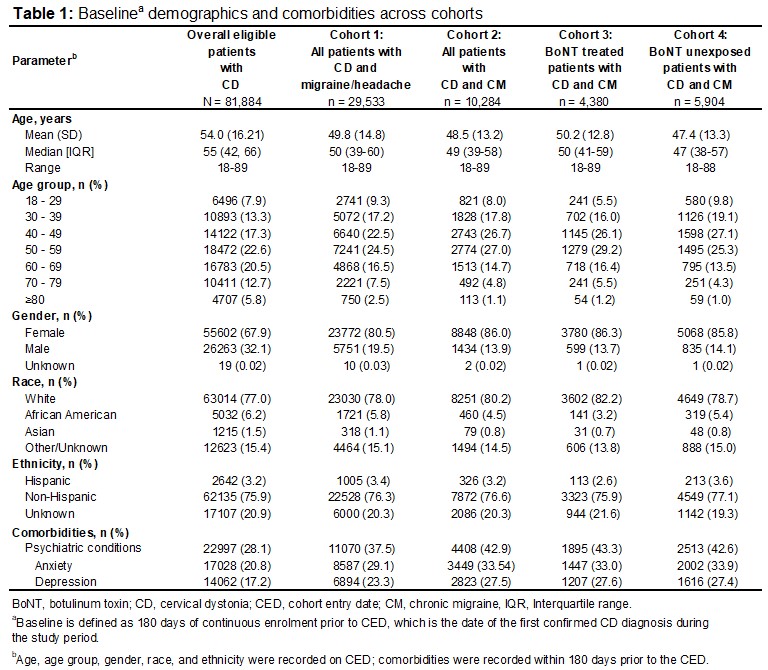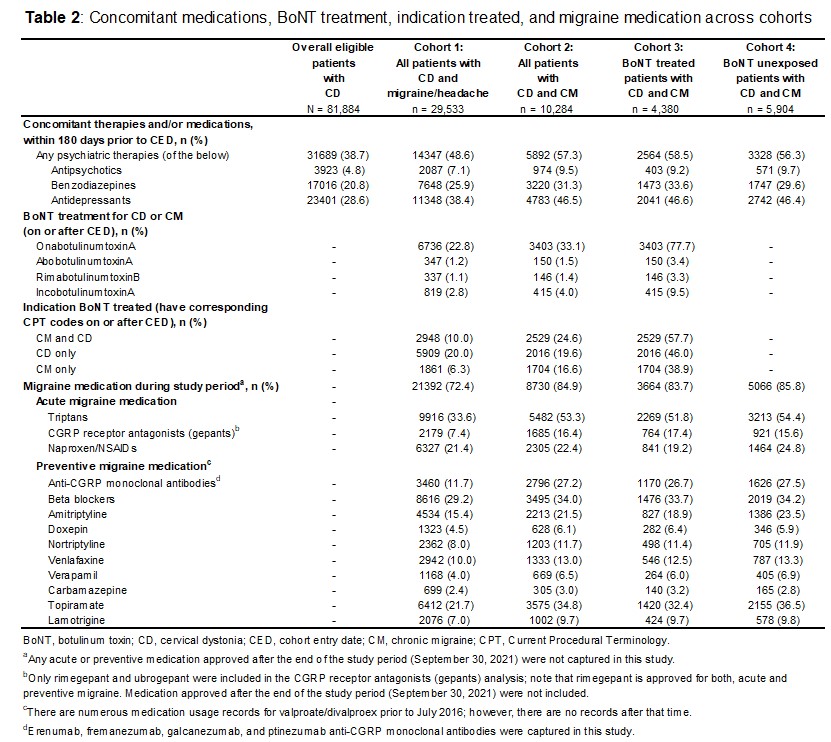Objective: Describe the real-world diagnosis, demographics, and clinical characteristics of chronic migraine (CM) in cervical dystonia (CD) patients stratified by botulinum neurotoxin (BoNT) treatment.
Background: Migraine is a common comorbidity in patients with CD; however, the diagnosis of CM in patients with CD is unknown.
Method: This observational retrospective cohort study used longitudinal patient-level data from the Optum Market Clarity Database in the US. CD cohort includes patients ≥18y with ≥2 CD diagnoses ≥30d apart during the study (January 1, 2017 – September 30, 2021) and ≥180d of continuous health plan enrollment prior to cohort entry (first CD diagnosis coding). Cohort 1: CD+migraine/headache patients; cohort 2: CD+CM patients; cohorts 3 and 4: CD+CM BoNT-treated and CD+CM BoNT-untreated patients, respectively [Figure 1]. Assessments include diagnosis, demographics and clinical characteristics of migraine/headache and CM in the CD cohort.
Results: Of 81,884 CD patients, 36.1% had migraine/headache (cohort 1, n=29,533) and 12.6% had concurrent CM (cohort 2, n=10,284). There were more CD+CM patients in cohort 4 (BoNT-untreated) compared to cohort 3 (BoNT-treated) (57.4% vs 42.6%) [Figure1]; cohort 3 had more older patients and fewer African Americans [Table1]. Common comorbidities were comparable across cohorts 1-4 (neck pain, range: 63.6% – 78.8%; psychiatric conditions, range: 37.5% – 43.3%). The proportion of patients with psychiatric conditions in the CD+CM cohort was greater as compared to the overall CD cohort (42.9% vs 28.1%) [Table1]. OnabotulinumtoxinA was the most used BoNT for CD or CM across cohorts 1-3. CD+CM patients treated with BoNT for both CD and CM diagnoses were higher (24.6%) than those treated for CD or CM individually (19.6% and 16.6%) [Table2]. Acute and preventive migraine medication utilization across cohorts is displayed in Table 2.
Conclusion: This large observational cohort study provides evidence that CM is a common comorbidity in CD patients. Providers should be aware that patients may have both CD and CM, which underscores the importance of diagnosis and selection of appropriate treatment options for managing these disease states in clinical settings. Further study is needed on the clinical phenotype of CD in CM patients.
Figure 1
Table 1
Table 2
To cite this abstract in AMA style:
R. Rodriguez, S. Broner, G. Forde, C. Rhyne, M. Sadeghi, E. Yue, A. Ukah, K. Becker Ifantides, H. Sarva. Real-World Diagnosis of Chronic Migraine in Patients With Cervical Dystonia Analyzed by Botulinum Neurotoxin Treatment Exposure: an Epidemiologic Perspective [abstract]. Mov Disord. 2024; 39 (suppl 1). https://www.mdsabstracts.org/abstract/real-world-diagnosis-of-chronic-migraine-in-patients-with-cervical-dystonia-analyzed-by-botulinum-neurotoxin-treatment-exposure-an-epidemiologic-perspective/. Accessed December 27, 2025.« Back to 2024 International Congress
MDS Abstracts - https://www.mdsabstracts.org/abstract/real-world-diagnosis-of-chronic-migraine-in-patients-with-cervical-dystonia-analyzed-by-botulinum-neurotoxin-treatment-exposure-an-epidemiologic-perspective/



